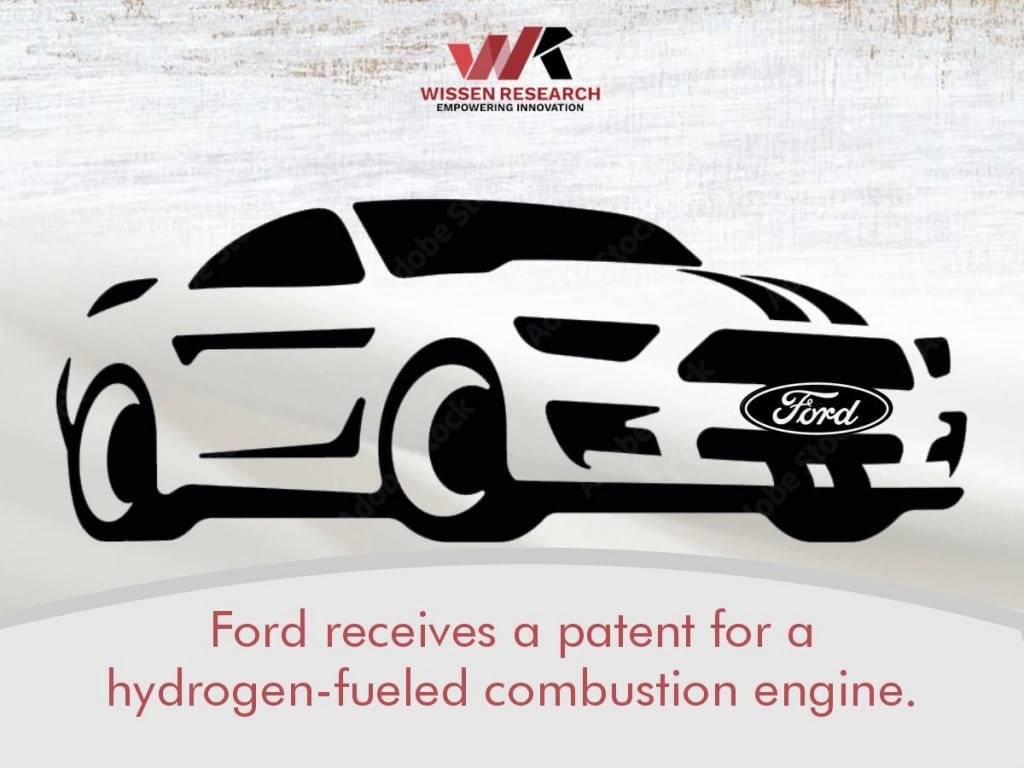
Ford announced earlier this month that it would split its business into two segments. Model E will be in charge of all-electric vehicles in the future, and a number of all-new EVs are presently being developed. The Blue division, on the other hand, will focus on combustion models and, based on a recent patent, appears to be working on a very interesting project.
Ford is experimenting with hydrogen combustion engines, as per patent documents. The invention is for a traditional internal-combustion engine that simply burns hydrogen instead of gasoline or diesel, resulting in zero hazardous emissions.
A Ford patent was recently discovered by Muscle Cars & Trucks, describing a method for developing a turbocharged hydrogen internal combustion engine that can function at a wide variety of air/fuel lambda ratio depending on torque demands. To manage combustion, internal exhaust gas recirculation (EGR) and valve timing would be used.
The Greek letter lambda is used to denote a fuel’s stoichiometric value of 1.00. The ratio by which all of the fuel is mixed with all of the oxygen to generate a complete burn is known as the stoichiometric value of a fuel. The stoichiometric value of gasoline engines is 14.7:1, which means that 14.7 parts air to 1-part gasoline equals a lambda of 1. Richer mixes are indicated by a value less than 1.00, and lean combustion is represented by a value greater than 1.00.
A gasoline engine can run in a wide range of compression ratios, ranging from 8:1 at the richest to 18.5:1 at the leanest. The richest gasoline combustion mixture is represented by 0.54 lambda, while the leanest is 1.25 lambda. Lambda is determined by diving the air/fuel ratio into the stoichiometric value of the fuel. Ford’s new turbocharged hydrogen combustion process aims to reach lambda values of above 2.00. As a result, the engine would be able to run extremely lean, requiring more than twice the amount of air required for stoichiometric hydrogen combustion.
Ford uses valve timing and exhaust gas recirculation (EGR) to make combustion possible, comparable to gasoline-powered engines. In comparison to a gasoline engine, the patent also illustrates a way for direct injection, which would transport hydrogen to the cylinders more efficiently, resulting in a 15 percent power boost.
In addition, the patent shows a hybrid powertrain. Between the engine and the transmission is an electric motor-generator, which might make the design even more fuel-efficient.
It’s unclear which cars Ford is planning for its hydrogen engine. After all, not all patents are successful in reaching the market. However, some sources claim that a future Mustang model will be equipped with a hydrogen power plant with Ford’s clutch-by-wire manual transmission system.
Hydrogen combustion is not the same as hydrogen fuel cells, which are used in automobiles such as the Toyota Mirai. The Mirai generates electricity using hydrogen to power an electric motor; hydrogen combustion, on the other hand, employs an engine that closely resembles a current gasoline combustion engine, although with a different fuel source.
A hydrogen-fueled car would be less expensive to construct than an electric vehicle since much of the componentry and design could be reused from the past century of combustion car technology. Hydrogen is also more abundant and accessible than the rare earth materials required for lithium-ion battery production.
© Copyright 2024 – Wissen Research All Rights Reserved.